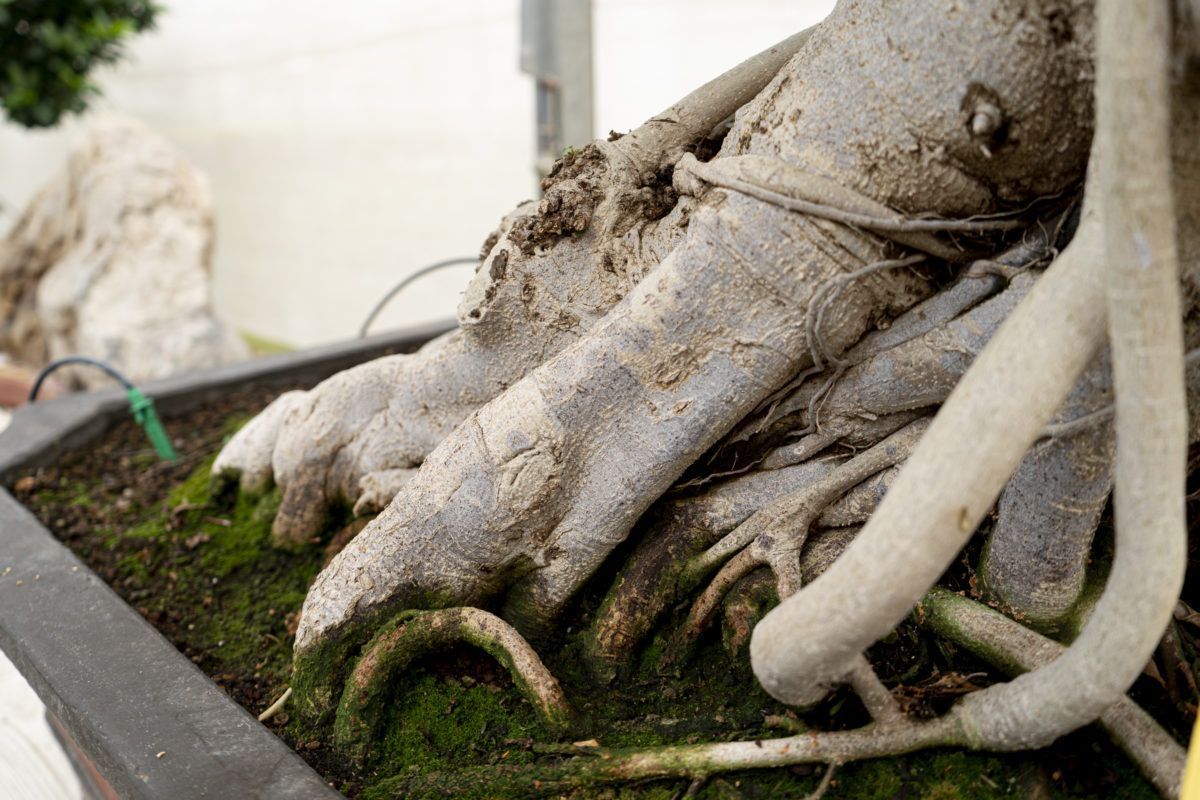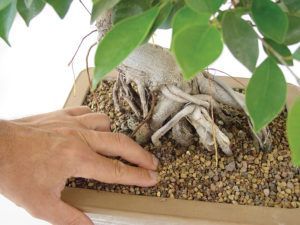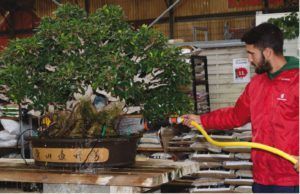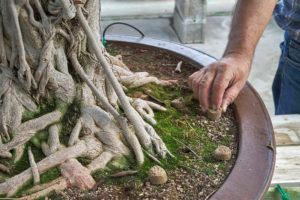Ficus retusa bonsai. Secrets of watering and fertilisation.

Ficus retusa bonsai are well known for their great resistance, that’s why they are most suitable for those fans who are starting in the world of bonsai. Ficus are a tree species that do not consume a large amount of water. The time we spend watering our bonsai is a good time to check the condition of the tree. Moreover, this variety of bonsai is very vigorous, this means that if we fertilise properly, our Ficus retusa will respond magnificently.
When to water our Ficus retusa bonsai?
Ficus is a bonsai species that likes a slightly dry soil before being watered again, as a consequence, watering with wet soil will end up taking its toll. They are trees that resist drought quite well thanks to their hard and fleshy leaves. These are covered with a layer of wax that makes it difficult for the water to evaporate excessively.
The irrigation frequency will be different depending on the time of the year, we will water more in summer than in winter. Irrigation will also depend on the location of the tree: if it is located in full sun, it will surely need more water than a bonsai located inside a house.
How do we water?
Before watering, we will check the soil humidity by touching its surface. If it is dry we will water with plenty of water. It is preferable to do it with a watering can, since with it, we are imitating the softness of the rain. With the watering can, we will avoid wearing down the substrate more than necessary, in addition to watering more evenly. We will make sure that all the earth is well soaked, and we will let the excess water drain through the holes in the bonsai pot. We recommend avoiding leaving water in the tray under the bonsai pot. If the roots are continuously immersed in water, we will provoke its rotting.
When to fertilise our Ficus retusa bonsai?
It is better to fertilise little by little and continuously. We can choose between two fertiliser formats: solid and liquid.
Solid compost is a classic. The pellets are strategically placed in the pot as far away from the nebari as possible (nebari is a Japanese word used to describe the base of the trunk). The compost balls release their nutrients as we water our bonsai. Normally, the balls should be changed once a month. We can see how its composition disintegrates slowly.
Another option is the liquid fertiliser. For many, it is the most practical to use since it is mixed with irrigation water. We will add the indicated amount of fertiliser in proportion to the water that we are going to use.
Our trick: So that the bonsai captures the maximum nutrients from the liquid fertiliser, we will do a first irrigation with water without fertiliser, this way the roots will activate and, with a second irrigation, they will capture the fertiliser more easily. We will let the soil soak up well.
For a tree as vigorous as the Ficus retusa, one application a month will be enough. Be careful, trees get saturated with too much fertiliser, so we must be careful not to harm the bonsai.
We hope this information was useful for you, and that your Ficus retusa bonsai thrive the whole year around.
About the Author
Josep Maria Miquel
Josep Maria Miquel has entered the world of bonsai in 1984. He worked with Mr. Takeo Kawabe on the "Shinpaku" project. He has notably also worked with Thierry Font on the "Mates" and "Sabinas" projects, being references in the world of bonsai. Director of the Bonsái Pasión and the France Bonsaï magazines, he has mostly dedicated his career to designing production at Mistral Bonsai. In 2011 he has been awarded the "Prix Européen d'art bonsaï" in Monaco, being considered the best professional in Europe.
Categories
Bonsai cultivation and care (54)
Bonsai gift (2)
Bonsai pests and diseases (6)
Bonsai repotting (3)
bonsai substrates (2)
bonsai tools (1)
Bonsai work (10)
Ceramic pots (3)
Chinese culture (1)
Chinese culture (2)
Corporative Mistral Bonsai (8)
Cuidados del bonsái (22)
Cultivo del bonsái (20)
Dead wood (2)



